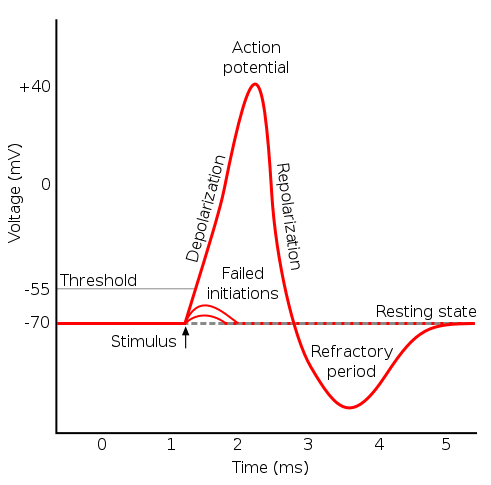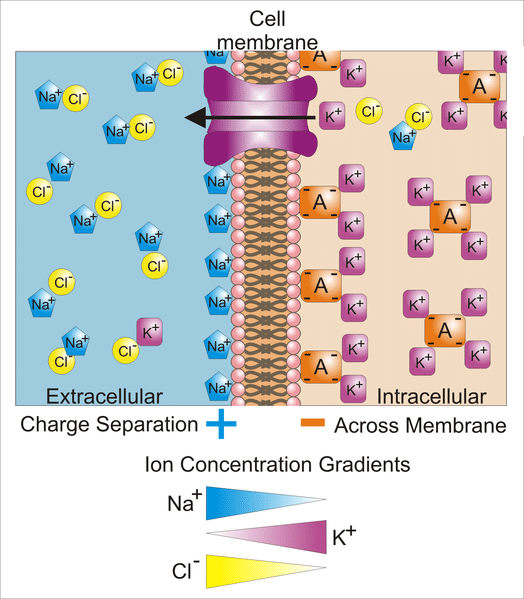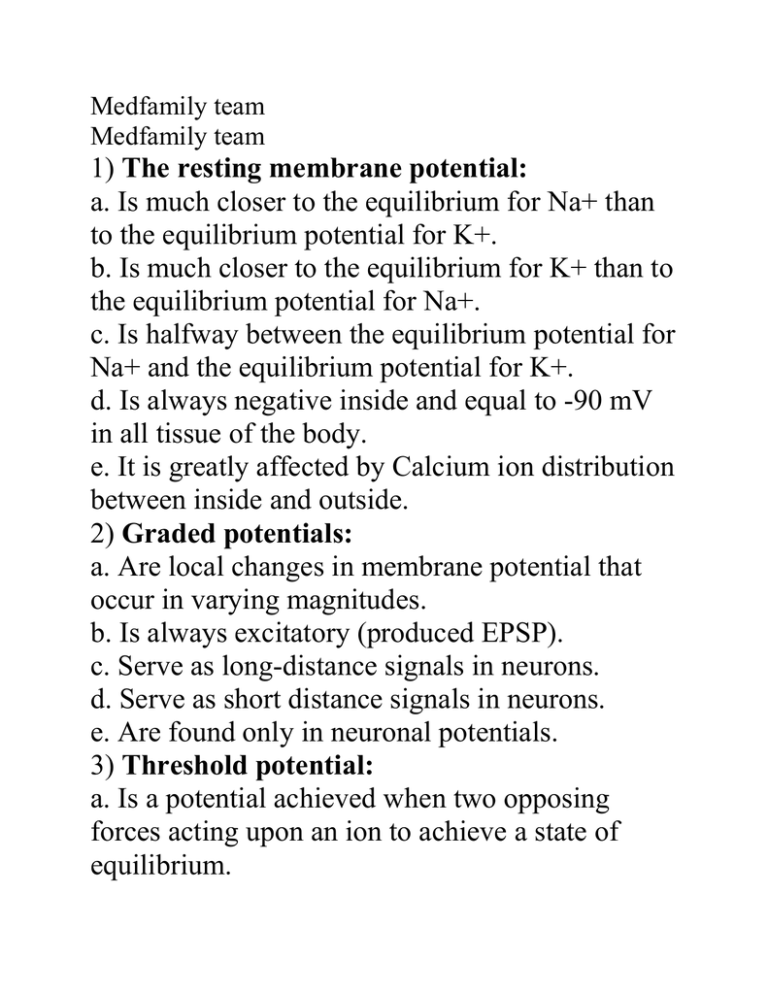Which of the Following Best Describes the Resting Membrane Potential
Stimulation of neuron X causes the postsynaptic neuron to depolarize by 05 mV. Rated 45 5 based on 78 customer reviews 16 May 2017.

Solved Question 7 6 Pts Which Of The Following Describes The Chegg Com
Action potential see action potential.

. A voltage difference of 0 millivolts mV across the membrane. C Activation gates and inactivation gates are closed. At the resting membrane potential of neurons potassium is at equilibrium D at -94 mV the chemical force for potassium movement is opposed exactly by the electrical force E at -94 mV the electrical force for potassium movement is zero.
B The intracellular environment has more positively charged sodium. The resting potential depends on the cell and can range from -70mV to -90mV the reason of that negative charge is the efflux of positively charged potassium ions that diffuse passively out of the cell via leak channels leaving the inner face of the membrane slightly electronegative Na do not affect because the membrane is not as permeable. Traditionally the electrical potential difference across a cell membrane is expressed by its value inside the cell relative to the extracellular environment.
The resting membrane potential is changed to an action potential at 30 mV charge on it. Without any outside influence the. See also brainstem.
The resting membrane potential is then maintained by the sodium potassium pump. How the resting membrane potential is established in a neuron. The best description of the neuron resting membrane potential is a state in which the flow of positive and negative ions across the plasma membrane is precisely balanced.
After-potential the period following termination of the spike potential. K ions diffusing out of the axon repolarizes it. Overview of neuron structure and function.
A Activation gates are open and inactivation gates are closed. Across the cell membrane of each neurone there exists a small difference in electrical charge known as the membrane potential. Electrotonic and action potentials.
Auditory evoked potential in electroencephalography changes in waves in response to sound. Po-tenshal existing and ready for action but not active. The resting membrane potential of a cell is defined as the electrical potential difference across the plasma membrane when the cell is in a non-excited state.
Top Answer A Explanation. A The intracellular environment is negatively charged. In this steady-state condition no further differences in charge will accumulate.
The membrane potential is maintained by moving potassium ions extracellularly and sodium ions intracellularly. The neuron and nervous system. The a resting membrane potential is a result of different concentrations of Na and K ions inside and outside the cell.
At the peak action potential K channels. Google Classroom Facebook Twitter. Anatomy of a neuron.
The adventure of the speckled band analysis power rangers ninja storm full episodes vive le crossword clue. A voltage difference across the plasma membrane when the neuron has been stimulated. Electric tension or pressure.
A voltage difference across the plasma membrane with more positive membrane potential inside. Which of the following describes the resting membrane potential of a neuron. Which of the following best describes the status of sodium channels at the resting membrane potential.
Its typical value lies between -50 and -75 mV. Which of the following best describes the resting membrane potential rmp. When there is a resting potential the outside of the axon is negative relative to the inside.
When the cell reaches threshold sodium rushes in via. A nerve impulse causes Na to enter the cell resulting in b depolarization. Resting membrane potential describes the steady state of the cell which is a dynamic process balancing ions leaking down their concentration gradient and ions being pumped back up their concentration gradient.
When X and Y are stimulated simultaneously the postsynaptic neuron depolarizes by 1 mV. A postsynaptic neuron has an RMP of -70mV and a typical threshold of -55mV. It has three presynaptic inputs-from neurons X Y and Z.
C The extracellular environment is negatively charged D It has a voltage of about 75 mV. The action of these pumps combined with the diffusion of certain ions through protein channels in the membrane results in a resting membrane potential of approximately 70mV with respect to the inside of the cell. B Activation gates are closed and inactivation gates are open.
The membrane potential is maintained by the passive transport of anions into the cell to create a diffusion force. The membrane potential is maintained by moving sodium ions extracellularly and potassium ions intracellularly. Which of the following best describes the resting membrane potential rmp.
The resting membrane potential develops because potassium leakage channels allow for a little bit to move outside the cell by its concentration gradient but is quickly stabilized by the electrical gradient. In electrically inactive neurones this is known as the resting membrane potential. This is the currently selected item.
The resting membrane potential of a nerve cell is -70 mV which indicates that the intracellular region of the nerve cell has a negatively charged environment in comparison to the extracellular environment. 1 Answer to 1. During an action potential Na ions diffuse out of the axon.
If X fires 10 times and Y fires 10 times. 131 Which of the following best describes the resting membrane potential RMP. Impulses in the axon travel towards the cell body.

Action Potential The Resting Membrane Potential Generation Of Action Potentials Teachmephysiology

Action Potential The Resting Membrane Potential Generation Of Action Potentials Teachmephysiology

No comments for "Which of the Following Best Describes the Resting Membrane Potential"
Post a Comment